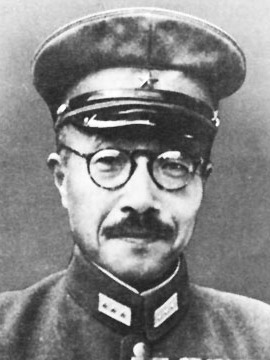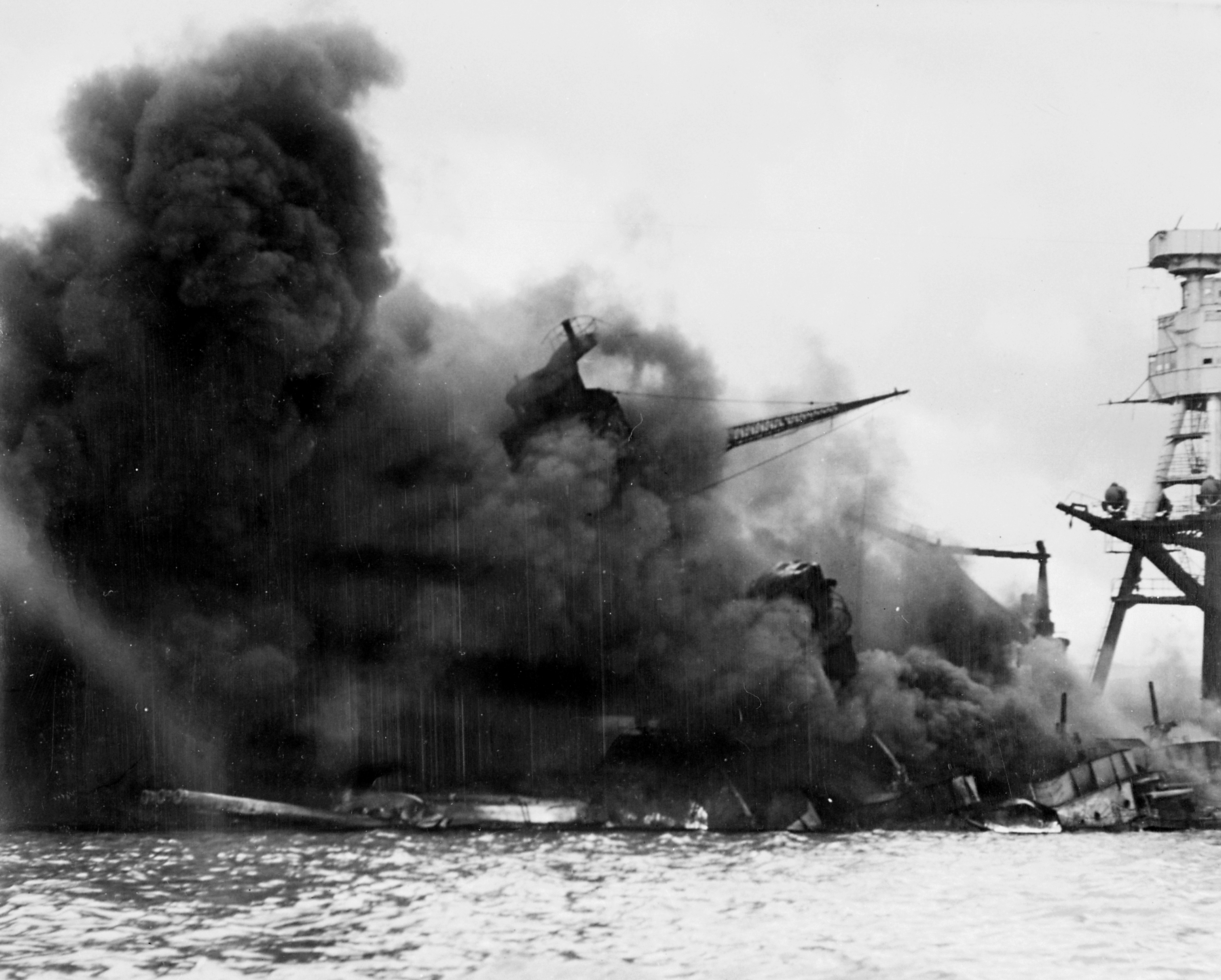How Japan’s hollow victory spelt the end for Hitler
On 7 December 1941, Japan launched a surprise attack on the US. In just two hours it destroyed a large part of the US fleet docked in Pearl Harbor and, in one stroke, forever destroyed US isolationism and made the conflict global.
 The US may have been expecting war but the attack on Pearl Harbor still took it totally by surprise. Yet 11 months before, a lone voice had predicted such a possibility. On the 27 January 1941, the US ambassador in Japan, Joseph Grew, cabled the White House warning that the Japanese might ‘attempt a surprise attack on Pearl Harbor using all their military facilities’.
The US may have been expecting war but the attack on Pearl Harbor still took it totally by surprise. Yet 11 months before, a lone voice had predicted such a possibility. On the 27 January 1941, the US ambassador in Japan, Joseph Grew, cabled the White House warning that the Japanese might ‘attempt a surprise attack on Pearl Harbor using all their military facilities’.
As 1941 wore on, the likelihood of war became more apparent but the US ignored Grew’s prediction, believing that conflict, if it came, would either start in the US-controlled Philippines or the Dutch or British possessions in Southeast Asia.
Certainly, US president, Franklin D. Roosevelt, believed war was a distinct possibility – ‘They [the Japanese] hate us,’ he said privately. ‘Sooner or later, they’re going to come after us’. He also feared what would happen to the US if Japan overran Britain’s possessions in Southeast Asia – ‘If Great Britain goes down,’ Roosevelt said, ‘all of us in all the Americas would be living at the point of a gun.’
‘Asia for the Asians’
 On 17 October 1941, the prospect of war became more real – Japan’s prime minister, Fumimaro Konoye, known for his restraint and sense of compromise, was replaced by the more aggressive Hideki Tōjō (pictured). Within a month, Tōjō had finalized plans to cripple the US fleet, and invade much of Southeast Asia to secure for Japan its supply of natural resources. Japan had long wanted to rid the area of Western imperialists and rule Asia on behalf of its neighbours – ‘Asia for the Asians’ became its war cry.
On 17 October 1941, the prospect of war became more real – Japan’s prime minister, Fumimaro Konoye, known for his restraint and sense of compromise, was replaced by the more aggressive Hideki Tōjō (pictured). Within a month, Tōjō had finalized plans to cripple the US fleet, and invade much of Southeast Asia to secure for Japan its supply of natural resources. Japan had long wanted to rid the area of Western imperialists and rule Asia on behalf of its neighbours – ‘Asia for the Asians’ became its war cry.
On 26 November, Tōjō’s plan went into action – a Japanese fleet commanded by Admiral Isoruku Yamamoto, consisting of six aircraft carriers, two battleships and assorted other craft, set off from north-eastern Japan. The Americans had broken Japanese codes but in the event, this gave them no advantage as the US fleet was maintaining strict radio silence. Meanwhile, in Washington, the US and Japan were negotiating Japan’s withdrawal from China. (Japan and China had been at war since 1931). Japan had no intention of withdrawing but was happy to lure the US into thinking that their intentions were honourable. It was all part of the ruse.
With Yamamoto’s fleet 275 miles north of the Hawaiian island of Oahu, the first wave of fighters took off, commanded by Lt Commander Mitsuo Fuchida (25 years later, having converted to Christianity, Fuchida became a US citizen). It took them 1½ hours to reach Oahu. At one point dense cloud obscured their route but at the most opportune moment, the clouds parted, and there below them, was Pearl Harbor.
Tora, tora, tora!
It was approaching 7 a.m., a Sunday morning, when the radar station on Oahu first reported to its HQ a number of aircraft on its screen. The reply came back: ‘Don’t worry about it’. HQ was expecting a squadron of US planes from California to be arriving that same morning. But these were Japanese planes (bombers, dive-bombers and fighters), 181 of them, intent on ripping out the heart of the US fleet quietly moored on this Pacific island, 3,400 miles away from Japan.
Neatly and conveniently lined up along ‘Battleship Row’, were seven of the US’s eight battleships plus a hundred other ships. Fuchida, knowing he couldn’t fail, dispatched the pre-arranged victory signal, Tora, tora, tora (Tiger, tiger, tiger). Torpedoes and bombs rained down. The general alarm sounded, ‘Man your battle stations – THIS IS NO DRILL!’ Within minutes, several of the ships had been hit. Men jumped overboard and tried to swim to safety. The previously calm waters of the harbor, now glazed with a layer of oil, erupted into a wall of flame, killing many of those in the water.
The nearby airfields were also targeted. Row upon row of perfectly-lined aircraft were destroyed. American sailors, lining up for breakfast and unable to comprehend what was happening, were mowed down as they waited their turn.
At 8.40, the second wave attacked. The Americans, now employing their anti-aircraft guns, managed to hit a few of the incoming planes, but the Japanese fighters inflicted yet more damage.
 By 10 a.m. it was all over – three of the eight American battleships had been sunk and four seriously damaged; many other vessels were destroyed together with almost 300 planes. 2,403 Americans died (civilian and military) and over 1,000 wounded. The Japanese lost 29 planes and 100 pilots.
By 10 a.m. it was all over – three of the eight American battleships had been sunk and four seriously damaged; many other vessels were destroyed together with almost 300 planes. 2,403 Americans died (civilian and military) and over 1,000 wounded. The Japanese lost 29 planes and 100 pilots.
At the same time, Japanese forces attacked the Philippines and the British colony of Hong Kong and violated neutral Thailand. The Pacific islands of Wake and Midway also fell victim to attack as well as British-controlled Malaya. Singapore, on the southern tip of Malaya, had been bombed. Without an official declaration of war, Japan, in just a matter of hours, had secured control of the skies and seas of a quarter of the world’s surface. As Winston Churchill described in his war memoirs, ‘Over all this vast expanse of waters Japan was supreme, and we everywhere were weak and naked.’
The Sleeping Enemy
But as successful as the operation may have appeared, its triumph was short-lived – a third wave, due to attack the huge stores of fuel and its navy arsenal, was cancelled due to fear of an American counterattack, and the battleships, having been sunk only in the shallow waters of the harbor, were mostly repaired and fully operational before the end of the war (although the USS Arizona, for one, remained on the bottom of the harbor where it is still today). None of its aircraft carriers had been hit nor its submarines. While Japan celebrated its supposed victory, Yamamoto knew that in the long term he had failed – ‘a military man can scarcely pride himself on having smitten a sleeping enemy’.
The following day, in his address to Congress, Roosevelt declared, ‘Yesterday, December 7, 1941, a date which will live in infamy, the United States of America was suddenly and deliberately attacked by naval and air forces of the Empire of Japan’. Congress accordingly voted 470 to 1 to go to war (the one being a pacifist vote from Montana).
Churchill was delighted. ‘To have the United States at our side’ (he later wrote), ‘was to me the greatest joy.’
Hitler Declares War
Adolf Hitler too was pleased, the teetotaler breaking with habit and toasting the Honorary Aryans, as he called the Japanese, with a small glass of champagne. ‘Now it is impossible for us to lose the war,’ he announced with glee. On December 11, less than six months since invading the Soviet Union, Germany declared war on the US. Hitler had not been obliged to – the Tripartite Pact, signed by Germany, Italy and Japan in September 1940, had only stipulated that Germany would declare war if Japan was the victim of aggression.
But Hitler wanted to pre-empt the possibility of the US declaring war on Germany. After all, as his Foreign Minister, Joachim von Ribbentrop, explained, ‘A great power does not allow itself to be declared war upon; it declares war on others’. Hitler, always hostile to America with its racially diverse and therefore inferior population, believed Germany had nothing to fear, predicting that the US would not be ready for war until at least 1970.
Both acts, the invasion of the Soviet Union and the declaration of war against the US, stand up as Hitler’s two greatest blunders. Germany’s fate was sealed and the conflict, which had started 27 months before, was now truly global.
 Rupert Colley.
Rupert Colley.
Read more about the war in The Clever Teens Guide to World War Two available as an ebook and 80-page paperback from Amazon, Barnes & Noble, Waterstone’s, Apple Books and other stores.